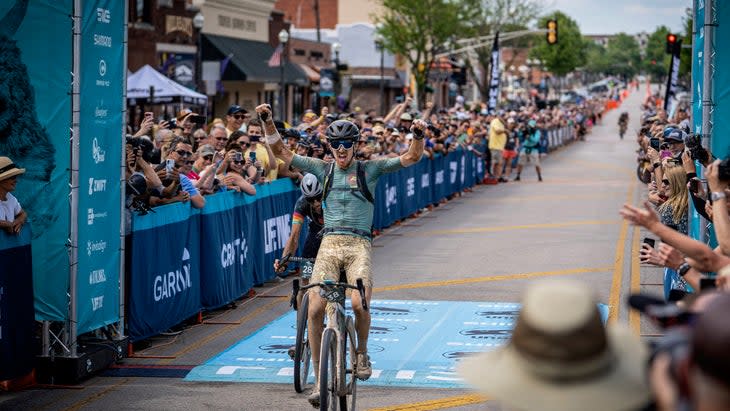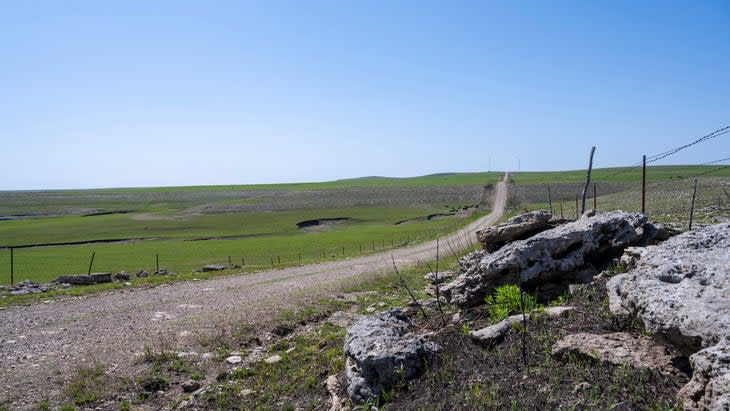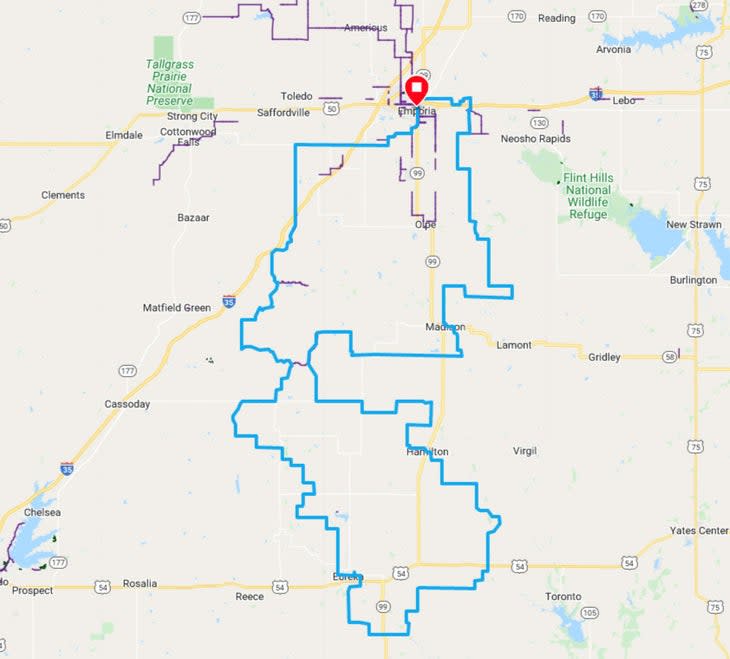Life Time reveals the 2022 Unbound Gravel courses
This article originally appeared on Velo News
Unbound Gravel is heading south out of Emporia this year, with nearly 10,000 feet of elevation gain in the Flint Hills of Kansas on tap for the 200-mile contest that is the anchor of the six-race Life Time Grand Prix series.
"People who have ridden the south course from 2016 to 2018 will be familiar with a lot of these roads," said Unbound Gravel event manager Ben Sachs, who designed this year’s course, and who tipped his hat to the race’s early course designers." LeLan [Dains] and Jim [Cummins] did a lot of exploring down there, and they found a lot of the good ones. I found a few little hidden gems that have not been used before, or at least in over a decade, and I remixed the order in which we do things."
The 100-mile, 200-mile, and 350-mile XL courses overlap. The 100-mile course is the first 40 and last 60 miles of the 200-mile event, for instance, with a short 1.5mi connection. And the XL uses about 190 miles of the 200-mile race. This is done largely to make a smaller footprint for emergency services to reach riders, if necessary. There are also 25- and 50-mile events that nest into the same roads.
Sachs said he expects this year’s 200-mile edition to be fast, not necessarily because of the road selection, but "because more and more fast people are showing up and competing."
Ian Boswell won the 2021 Unbound Gravel 200 in 10 hours and 15 minutes -- with an average power of 247 watts and a normalized power of 280 watts.

Unbound Gravel by the numbers
Unbound Gravel features checkpoints where riders can receive help from their support crews, and also neutral water oasis stops where anyone can get water. Riders cannot receive personalized outside help at other points. (Riders are allowed to take water from locals who often pass out bottles by the roadside.) In the XL, there is zero outside help allowed, so riders must be self-sufficient, but can stop at stores or gas stations.
Unbound Gravel XL -- 352 miles -- 14,219ft -- 0 checkpoints
Unbound Gravel 200 -- 204.6 miles -- 9,703ft - 2 checkpoints – 2 water oasis
Unbound Gravel 100 -- 104.8 miles -- 5,271ft -- 1 checkpoint – 1 oasis
Unbound Gravel 50 -- 52.2 miles -- 2,054ft -- 1 aid station
Unbound Gravel 25 -- 25 miles -- 777ft -- 1 aid station
Related: Colin Strickland's secret sauce for Unbound Gravel? Staying chill and confident
Hills, water, mud, and rocks
The southern route does not have any climbs as long as the northern options, like what was used in 2021, but there are a handful of climbs of 150 feet or so with double-digit gradients.
“The harder, steep climbs are Teter, what’s affectionately known as The Biatch, Canyon Hill, and Judge Hill,” Sachs said. “But what the south has that the north doesn’t have is ridges that make for these really long rolling climbs that wear on you.”
“Some of the coolest terrain is out on top of the ridge at Texaco Hill. In the 2016 edition, they climbed up and over this ridge in the first 65 miles,” Sachs said. “In this route, we shoot straight through it, and come back into the part of the course at around mile 140. This splits up the longer climbs, and makes it more exciting.”

Sachs said he minimized the water crossings.
“While I really enjoy the adventure aspect, with more and more people in the race, that’s a safety piece that makes me nervous,” he said.
That said, mile 27 at Camp Creek features what Sachs calls a “significant” water crossing, then there are a few low-water bridges that could end up underwater if the area receives a lot of rain.
Riders who did or read about the 2015 edition remember how mud ended the races of many riders in just the first couple of miles. That section has been pulled out.
“I still wanted to have a piece like that -- a famous or an infamous part of the south course -- but put it later in the day when people are more spread out instead of in a big mob,” he said.

Speaking of infamous, the sharp flint rocks of the area have always been a signature part of the race. Flat tires aren’t guaranteed, but they are likely for many riders.
“Nothing is guaranteed, but the roads to the south are generally smoother than what you get up north near Alma, for instance,” Sachs said. “There are still some rough spots around Texaco Hill, the longer climb. And one cool spot around Willow Creek at about mile 125 has some big, fist-sized rocks scattered around the road. So that’s a place to be careful.”
You can look at each route on UnboundGravel.com now.
VeloNews will be covering Unbound Gravel on-site and the lead-up to the world’s most important gravel race again this year.
For exclusive access to all of our fitness, gear, adventure, and travel stories, plus discounts on trips, events, and gear, sign up for Outside+ today.

